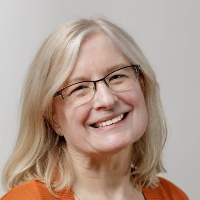The mission of hospice providers is to help people live their last months or weeks of life in the most comfortable, dignified and satisfying way possible. This worthy objective has become a passion of mine since the first time my family benefited from their care. However, one little-known hospice service was missing from our experience. It is called music-thanatology and is it the growing field of using music as an aid in the dying process.
According to Music-Thanatology Association International, this practice “is a musical/clinical modality that unites music and medicine in end of life care. The music-thanatologist utilizes harp and voice at the bedside to lovingly serve the physical, emotional and spiritual needs of the dying and their loved ones with prescriptive music.”
Jane Franz, Certified Music-Thanatologist (CM-Th) and co-author of From Behind the Harp: Music in End of Life Care, offers insights on how music can comfort dying patients and console mourning family members and how caregivers can seek out this service for a loved one.
How Music Influences the End-of-Life Experience
When someone you love is terminally ill, there are many complex emotions involved. The instinct to nurture and comfort them is intense, but it can be difficult to know what is appropriate to say or do. End-of-life care and support are very different from the daily care that family members previously provided. In many cases, busy days of preparing meals, providing medications and chauffeuring between doctor’s appointments are replaced with comfort care and bedside vigils.
This is one of the many reasons Franz feels that this very special application of music is helpful to people who are terminally ill or dying. “It provides a space and time in which people can rest into their own processes without the necessity of words. This allows patients and caregivers alike to relax,” she explains. “The result of this for the patient often manifests as lowered respiration rates, more stable heart rates, less anxiety and agitation, and often sleep that has previously eluded them. The music vigil also creates a sacred space in which one can experience the divine within themselves, the music and the silence.”
Prescriptive music is used as a complement to more traditional hospice services and helps patients and their families remain present and as at ease as possible throughout the end-of-life process. Trained specialists like Franz closely observe a patient’s breathing, vital signs and demeanor to adapt their music and meet their unique needs in that moment. “The music follows the listener and is played in response to them on physical, emotional and spiritual levels,” describes Franz. “It is humbling work and grows the soul. The dying have much to teach us. It is never the other way around.”
How to Obtain Music-Thanatology Services
While many people can use music as a healing tool or even to help a loved one through the death process, the profession of music-thanatology requires a deep understanding of medical issues and music and how both these things affect the mind and body.
“There are two training programs in the U.S., and most of us go through the credentialing arm of the Music-Thanatology Association International (MTAI) to become certified music-thanatologists,” says Franz. Those who have received their certification use CM-Th after their names.
Many people do not utilize music-thanatology services simply because they are unaware that this field exists. Certified music-thanatologists usually establish a private practice or work in conjunction with hospice and palliative care providers, universities and hospitals. If a loved one is receiving hospice care, ask the provider if there is a practicing music-thanatologist affiliated with their organization or if there is one in the area whom they can recommend. The MTAI also maintains a worldwide database of certified individuals and their contact information for the public to use.
The inarguable fact is that we will all die. The only questions are when and how. Music may seem like a strange therapeutic technique to use during such a delicate time, but any practice that allows us to go through this process with less pain and a higher quality of life is worth consideration.
